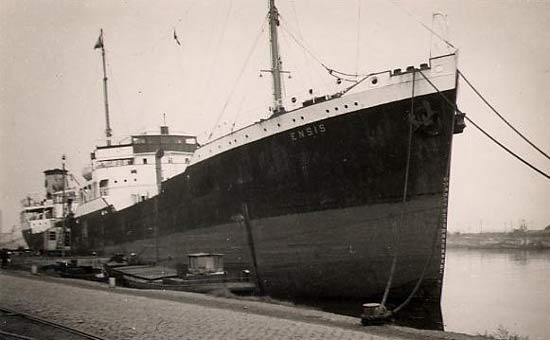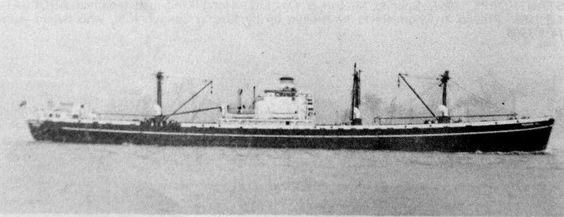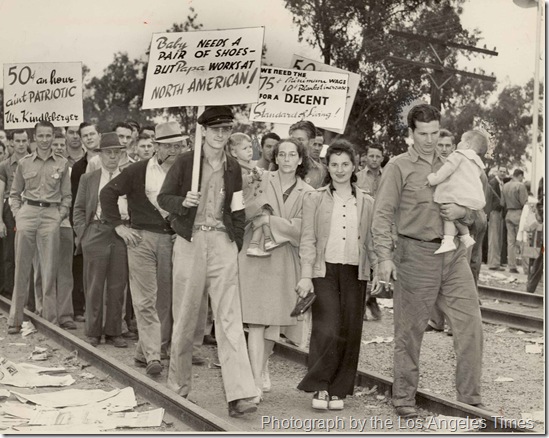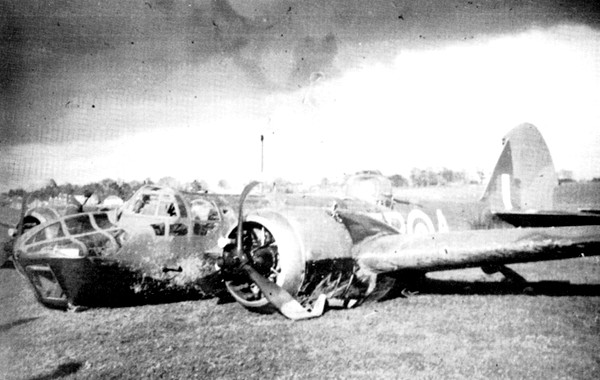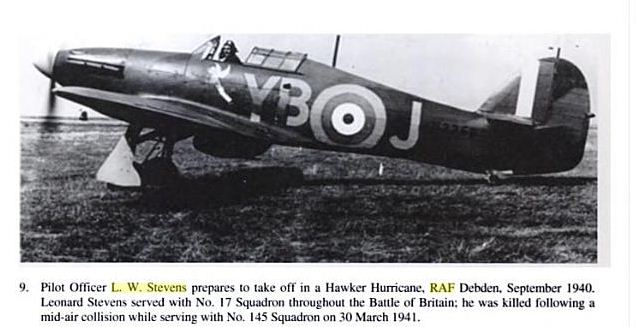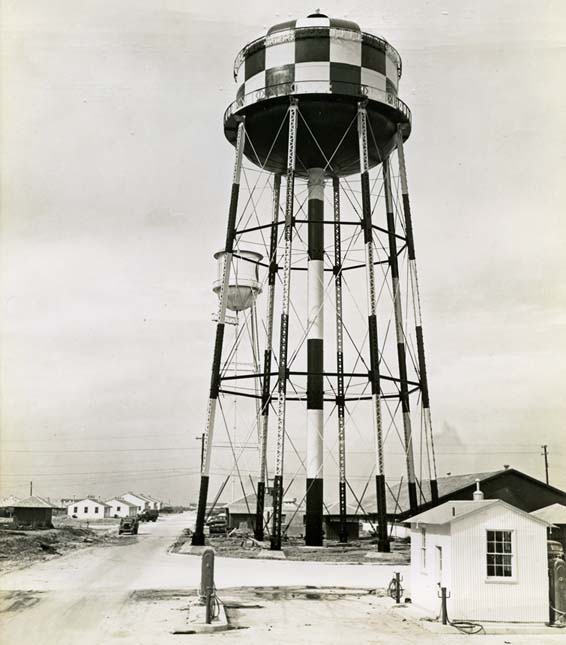Friday 10 October 1941
 |
| Evacuees from Leningrad - some of the lucky few able to fly out or get on a ferry across Lake Ladoga - board a Red Air Force transport on 10 October 1941. |
 |
| Field Marshal Reichenau greets Adolf Hitler in Poland. |
The most important objective of this campaign against the Jewish-Bolshevik system is the complete destruction of its sources of power and the extermination of the Asiatic influence in European civilization.
In this eastern theatre, the soldier is not only a man fighting in accordance with the rules of the art of war, but also the ruthless standard bearer of a national conception and the avenger of bestialities which have been inflicted upon German and racially related nations. For this reason the soldier must learn fully to appreciate the necessity for the severe but just retribution that must be meted out to the subhuman species of Jewry. The Army has to aim at another purpose, i. e., the annihilation of revolts in hinterland which, as experience proves, have always been caused by Jews.The Severity Order embodies hateful language for anyone, but certainly for any soldier who only claims to be "following orders." The full text of the Severity Order is reproduced below.
 |
| Reichenau standing next to his command car during Operation Barbarossa. Visible behind Reichenau is the commander of the 297th Infantry Division, General of Artillery Max Pfeffer. |
 |
| Local people gathered for the executions at Zasulye Yar pursuant to the order of the German commander of the town of Lubny on 10 October 1941. |
 |
| A Heinkel He 111H on a torpedo training exercise, 10 October 1941. |
 |
| A Canada National Railways locomotive at Kamloops Junction, BC, on 10 October 1941 (Bud Laws Collection at Trainweb.org). |
Below is the full text of the secret order issued by Field Marshal von Reichenau on 10 October 1941. This was appended to a more innocuous order.
SECRET!
Army H. Q., 10.10.41
Army Command 6., Sec. Ia-A. 7
Subject: Conduct of Troops in Eastern Territories.
Regarding the conduct of troops towards the Bolshevistic system, imprecise ideas are still prevalent in many cases. The most essential aim of war against the Jewish-Bolshevistic system is the complete destruction of their means of power and the elimination of Asiatic influence from the European culture. In this connection, the troops are facing tasks which exceed the onesided routine of soldiering. The soldier in the eastern territories is not merely a fighter according to the rules of the art of war but also a bearer of ruthless national ideology and the avenger of bestialities which have been inflicted upon German and racially related nations.
Therefore the soldier must have full understanding for the necessity of a severe but just revenge on subhuman Jewry. The Army has to aim at another purpose, i. e., the annihilation of revolts in hinterland which, as experience proves, have always been caused by Jews.
The combating of the enemy behind the front line is still not being taken seriously enough. Treacherous, cruel partisans and unnatural women are still being made prisoners of war and guerilla fighters dressed partly in uniforms or plain clothes and vagabonds are still being treated as proper soldiers and sent to prisoner-of-war camps. In fact, captured Russian officers talk even mockingly about Soviet agents moving openly about the roads/ and very often eating at German field kitchens. Such an attitude of the troops can only be explained by complete thought-lessness, so it is now high time for the commanders to clarify the meaning of the present struggle.
The feeding of the natives and of prisoners of war who are not working for the Armed Forces from Army kitchens is an equally misunderstood humanitarian act as is the giving of cigarettes and bread. Things which the people at home can spare under great sacrifices and things which are being brought by the Command to the front under great difficulties, should not be given to the enemy by the soldier not even if they originate from booty. It is an important part of our supply.
When retreating the Soviets have often set buildings on fire. The troops should be interested in extinguishing of fires only as far as it is necessary to secure sufficient numbers of billets. Otherwise, the disappearance of symbols of the former bolshevistic rule even in the form of buildings is part of the struggle of destruction. Neither historic nor artistic considerations are of any importance in the eastern territories. The command issues the necessary directives for the securing of raw materials and plants, essential for the war economy. The complete disarming of the civil population in the rear of the fighting troops is imperative considering the long and vulnerable lines of communications. Where possible, captured weapons and ammunition should be stored and guarded. Should this be impossible because of the situation of the battle so the weapons and ammunition will be rendered useless. If isolated partisans are found using firearms in the rear of the army drastic measures are to be taken. These measures will be extended to that part of the male population who were in a position to hinder or report the attacks. The indifference of numerous apparently anti-soviet elements which originates from a "wait and see" attitude, must give way to a clear decision for active collaboration. If not, no one can com-plain about being judged and treated a member of the Soviet System.
The fear of the German counter-measures must be stronger than the threats of the wandering Bolshevistic remnants. Being far from all political considerations of the future the soldier has to fulfill two tasks:
1. Complete annihilation of the false Bolshevistic doctrine of the Soviet State and its armed forces.
2. The pitiless extermination of foreign treachery and cruelty and thus the protection of the lives of military personnel in Russia.
This is the only way to fulfil our historic task to liberate the German people once forever from the Asiatic-Jewish danger.
Commander in Chief
(Signed) von Reichenau
Field Marshal.
October 1941
October 1, 1941: Germans and Finns Advance in USSR
October 2, 1941: Operation Typhoon Broadens
October 3, 1941: Air Battles Near Moscow
October 4, 1941: Stalin Contemplates Defeat
October 5, 1941: Hoth Goes South
October 6, 1941: First Snowfall After Dark
October 7, 1941: Stalin Gets Religion
October 8, 1941: FDR Promises Stalin Aid
October 9, 1941: FDR Orders Atomic Bomb Research
October 10, 1941: Reichenau's Severity Order
October 11, 1941: Tank Panic in Moscow
October 12, 1941: Spanish Blue Division at the Front
October 13, 1941: Attack on Moscow
October 14, 1941: Germans Take Kalinin
October 15, 1941: Soviets Evacuate Odessa
October 16, 1941: Romanians Occupy Odessa
October 17, 1941: U-568 Torpedoes USS Kearny
October 18, 1941: Tojo Takes Tokyo
October 19, 1941: Germans Take Mozhaysk
October 20, 1941: Germans Attack Toward Tikhvin
October 21, 1941: Rasputitsa Hits Russia
October 22, 1941: Germans Into Moscow's Second Defensive Line
October 23, 1941: The Odessa Massacre
October 24, 1941: Guderian's Desperate Drive North
October 25, 1941: FDR Warns Hitler About Massacres
October 26, 1941: Guderian Drives Toward Tula
October 27, 1941: Manstein Busts Loose
October 28, 1941: Soviet Executions
October 29, 1941: Guderian Reaches Tula
October 30, 1941: Guderian Stopped at Tula
October 31, 1941: USS Reuben James Sunk
2020





